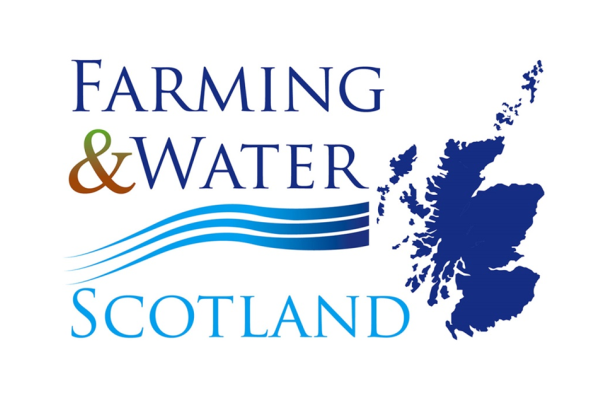Slurry lagoons - More than just a hole in the ground
We have come a long way in lagoon construction since the early days in the ’70s when midden walls were heightened or a hole was dug in the ground to contain slurry to cope with the move from byres into cubicle housing. As herds increased in the ’80s, ring tanks became a popular alternative designed to cope with slurry produced. Over the last 10 years, aided largely by Scottish Government SRDP funding and a greater awareness of the need to collect associated dirty water from collecting yards, silage pits, etc., we have seen a dramatic increase in the size of stores being built.
The increase in Priority Catchments and good dialogue with SEPA now mean more farmers can store for 180-day winter. Down in Wigtownshire, 16 farmers took advantage of Scottish Government AECS Slurry Store funding, which saw available storage increase from 64 days to 180 days providing on average an extra 625,000 gallons. The majority have invested in sheet lined lagoons, but they are more than a hole in the ground and need to be designed and built properly. The 7 S’s are a good guide to successful slurry lagoon storage.
The 7 'S's' of Slurry Storage
- Separate clean water – a shed roof 100’x40’ will gather the equivalent of 40 slurry tankerfuls of water over the winter. Sorting a roan is often all that’s needed to stop it running onto a dirty yard and needing to be collected in a store.
- Siting – decide whether to build in the steading or opt to position it away – we have a number of farmers who pump to a faraway lagoon but are then able to spread to fields that previously got little slurry.
- Separate clean water – a shed roof 100’x40’ will gather the equivalent of 40 slurry tankerfuls of water over the winter. Sorting a roan is often all that’s needed to stop it running onto a dirty yard and needing to be collected in a store.
- Siting – decide whether to build in the steading or opt to position it away – we have a number of farmers who pump to a faraway lagoon but are then able to spread to fields that previously got little slurry.
- Scoring for AECS – whether you can get a grant is dependent on a number of factors. The key one is whether your farm lies within the eligible Water Quality Target Area – go online and use SGRPID tool to find out. Businesses must already have a slurry system, but not previously have received SRDP slurry grant. Funds will be tight, so you need to look at the scoring breakdown in detail.
- Structural Engineer – work closely with an experienced contractor (not just someone who can sit on a digger) and also an engineer to ensure the works are built to last. Whilst you won’t always need Planning Permission, you will always need a Building Warrant and an Engineer to sign off when completed to allow SEPA to give final approval.
- Sheet Liner Choice – need to decide whether to use PVC/HDPE and also if there is a need for a geotextile liner. Speak to SEPA to check that any liner proposed for use is approved.
- Slurry Handling – most are now designing lagoons so that you don’t need to go inside the fence to draw off slurry and using transfer pipe through the wall to an outside double valve draw-off point. Getting slurry in is best if the system can be designed to run on a gravity basis.
- Safety - the requirement is to construct a child-safe fence (with most opting for 1.8m chain link). Make sure gates are sited to allow mixing but put a barrier across to prevent pump tractor going into the lagoon.
Useful Resources
- Slurry Lagoon Storage & Construction - Frequently Asked Questions
- RAMS - How to complete a Risk Assessment for Manure and Slurry map
- Rural Sustainable Drainage Systems: A practical design and build guide for Scotland's farmers and landowners Rural Sustainable Drainage Systems (Rural SuDS) will reduce agricultural diffuse pollution impacts as they are physical barriers that treat rainfall runoff. They are low cost, aboveground drainage structures that capture soil particles, organic matter, nutrients and pesticides before they enter our water environment. This Design and Build guide can be used by farmers and land managers to reduce diffuse pollution.
- Livestock manure and silage storage infrastructure for agriculture (C759) Provides up-to-date information on the selection, sizing, costs and risks associated with farm waste storage as well as on the issues that may arise during the design, construction and operation phases.
- Guidance for Farm Steading Drainage Assessment - this guidance document provides information on how to undertake and produce a Farm Steading Drainage Assessment.
- Farm Waste Management Plan - this guidance document provides information and a template for a Farm Waste Management Plan.
- DEFRA: Code of Good Agricultural Practice for reducing ammonia emissions. This Code of Good Agricultural Practice (COGAP) provides best practice guidance for reducing ammonia emissions from farms in England. It is anticipated that Scotland will be reviewing their own air quality policy in 2020 and we may see some of these measures, for example covering slurry storage facilities, proposed by DEFRA being adapted for Scotland.
Sign up to the FAS newsletter
Receive updates on news, events and publications from Scotland’s Farm Advisory Service


